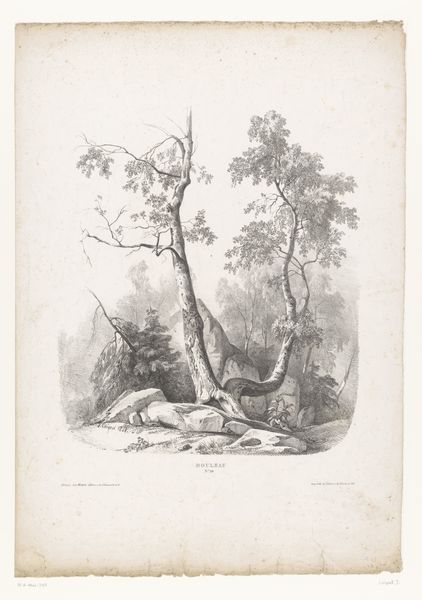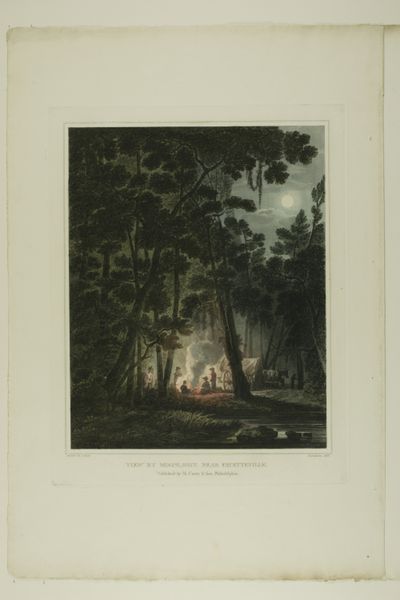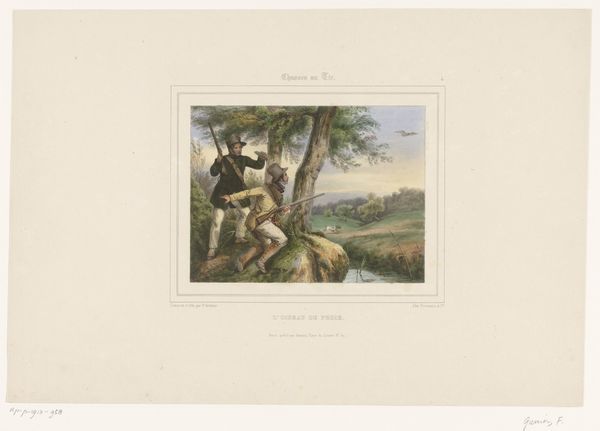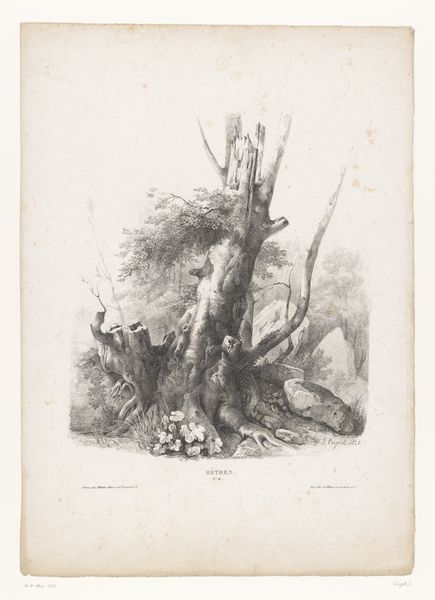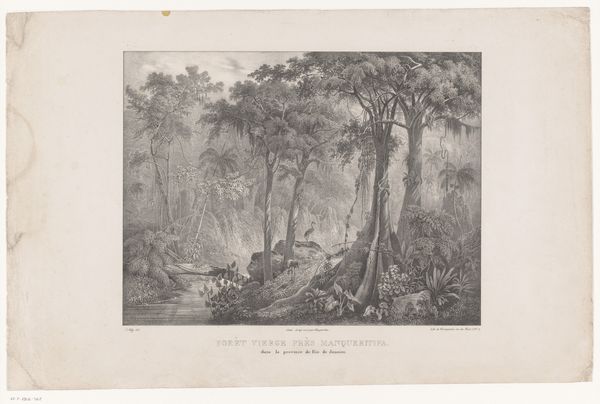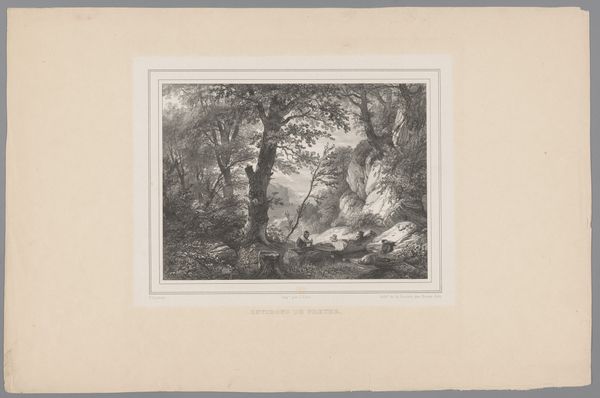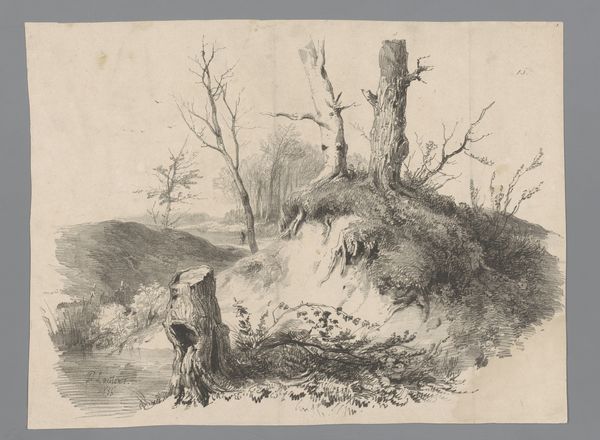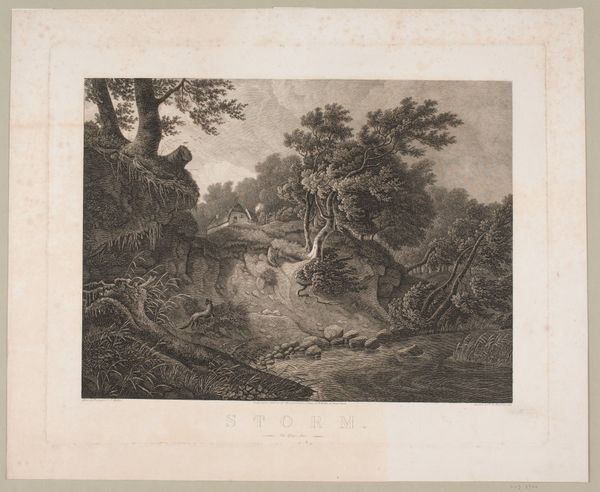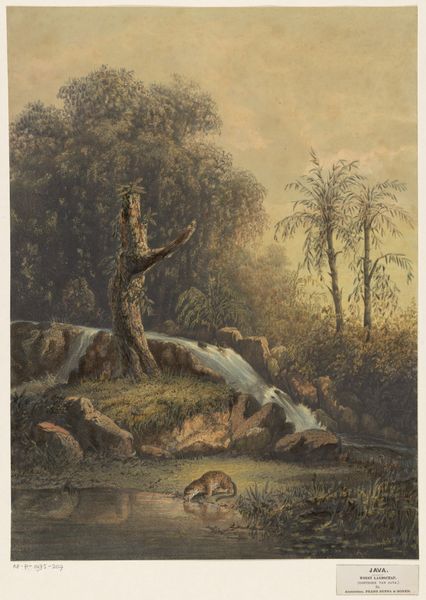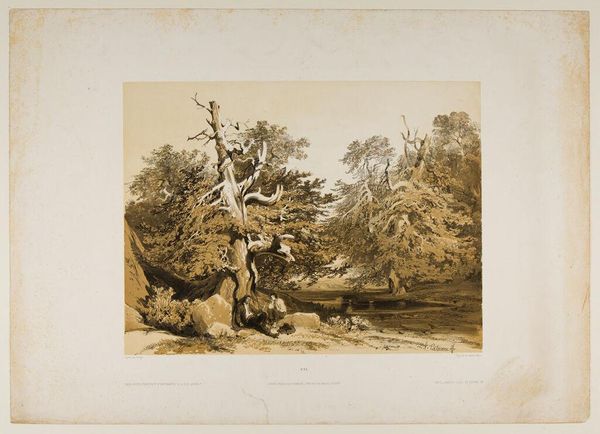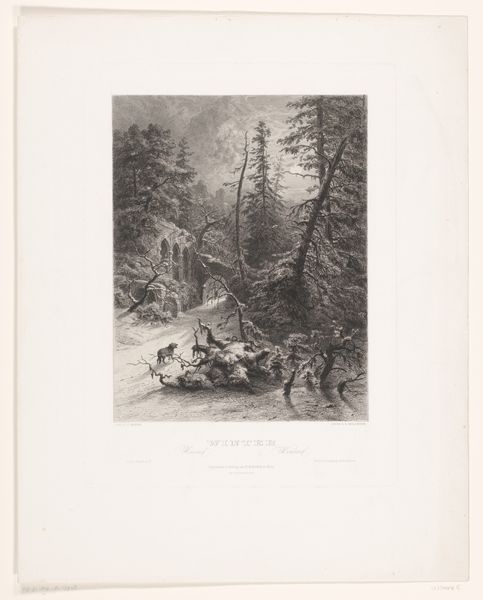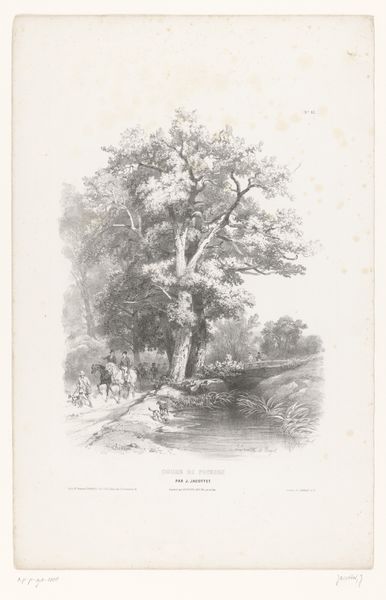
Tombs of Assiniboin Indians on Trees, plate 30 from volume 1 of `Travels in the Interior of North America' 1832
karlbodmer
Joslyn Art Museum,Omaha, NE, US
lithograph, print
ink painting
lithograph
pencil sketch
landscape
charcoal drawing
oil painting
romanticism
watercolour illustration
charcoal
watercolor
indigenous-americas
Copyright: Public domain
Editor: This mixed-media print by Karl Bodmer, titled "Tombs of Assiniboin Indians on Trees," created in 1832, portrays a rather unusual burial scene. It feels like a stark contrast between nature’s serenity and the gravity of death. How do you interpret this work? Curator: It's essential to see this piece through the lens of colonial impact. Bodmer, as a European artist, documents what he sees, but his gaze is inevitably shaped by his own cultural biases. These "tombs" aren't just passive images; they represent a clash of cultures and belief systems. What is rendered as picturesque is rooted in the disruption and displacement of Indigenous peoples. Editor: So, the Romanticism in the style sort of clashes with the subject matter? Curator: Precisely. The aesthetic choices—the dramatic lighting, the idealized depiction of the landscape—can inadvertently sanitize the realities of colonization and cultural dispossession. We need to ask ourselves: whose perspective are we prioritizing when we admire this image? Editor: That's a very valid question. I didn’t consider it beyond the mere depiction. Does the presence of the animals contribute to your understanding of it? Curator: Definitely. Consider the animals depicted, appearing so naturally amidst the structures; they speak to the continuity of life, but also serve as a subtle commentary on how even sacred spaces become integrated into the natural world after human presence fades or is disrupted. Do you think Bodmer was aware of how layered his message was? Editor: It's hard to say for sure, but I now see how his cultural context influenced the narrative. I guess looking at art through an intersectional perspective makes all the difference. Curator: Indeed. It challenges us to be more critical and aware of the power dynamics inherent in representation, hopefully leading to a more equitable dialogue around art history.
Comments
No comments
Be the first to comment and join the conversation on the ultimate creative platform.
